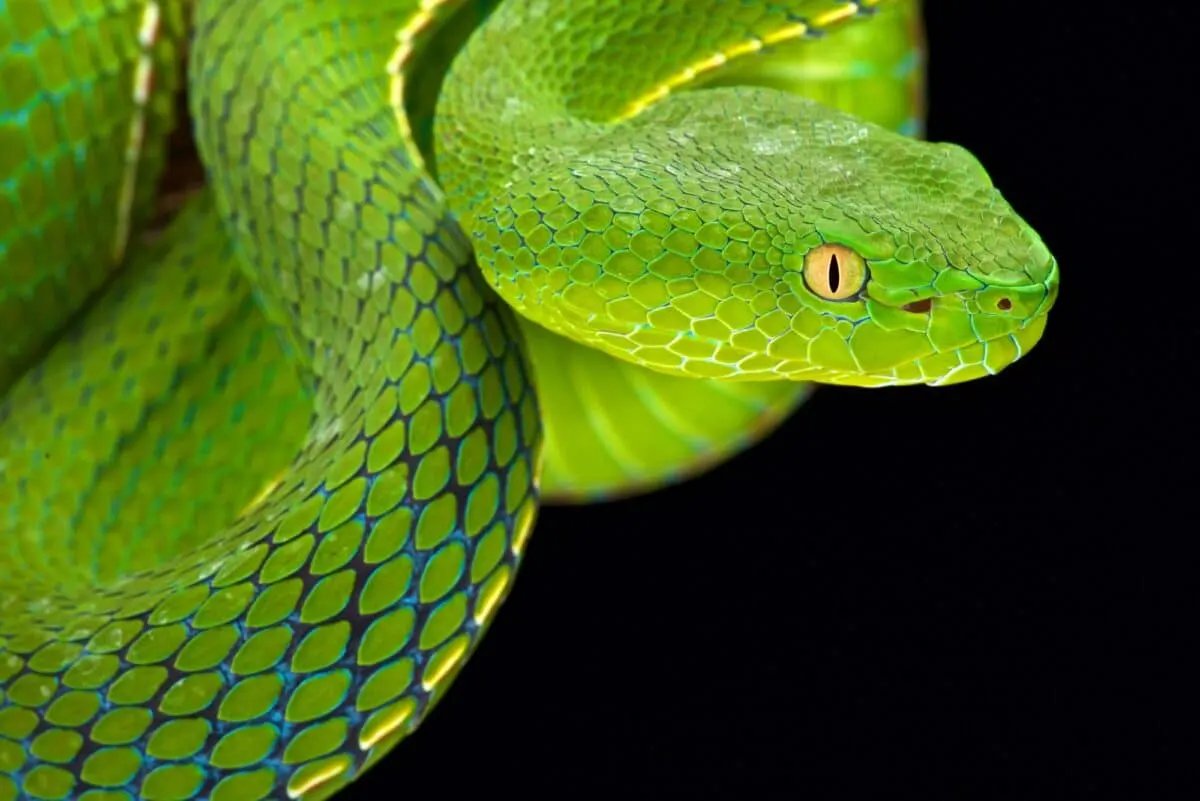The Green Tree Viper Bite is a venomous snake species bite commonly found in parts of Southeast Asia, South Asia, and East Asia. This snake species is known for its striking green color and can often be found in trees or bushes.
If you ever encounter a Green Tree Viper, it is important to know that their bite is highly venomous and can lead to severe health complications if not treated immediately.
Want to compare with another viper? Let’s look at The Fer-De-Lance Pit Viper Bite.
Want to compare with another viper? Let’s look at Habu Pit Viper Bite.
Want to compare with another viper? Let’s look at The Temple Viper Bite.
This article will provide detailed information about Green Tree Viper bites, including the symptoms, treatment options, and prevention strategies.
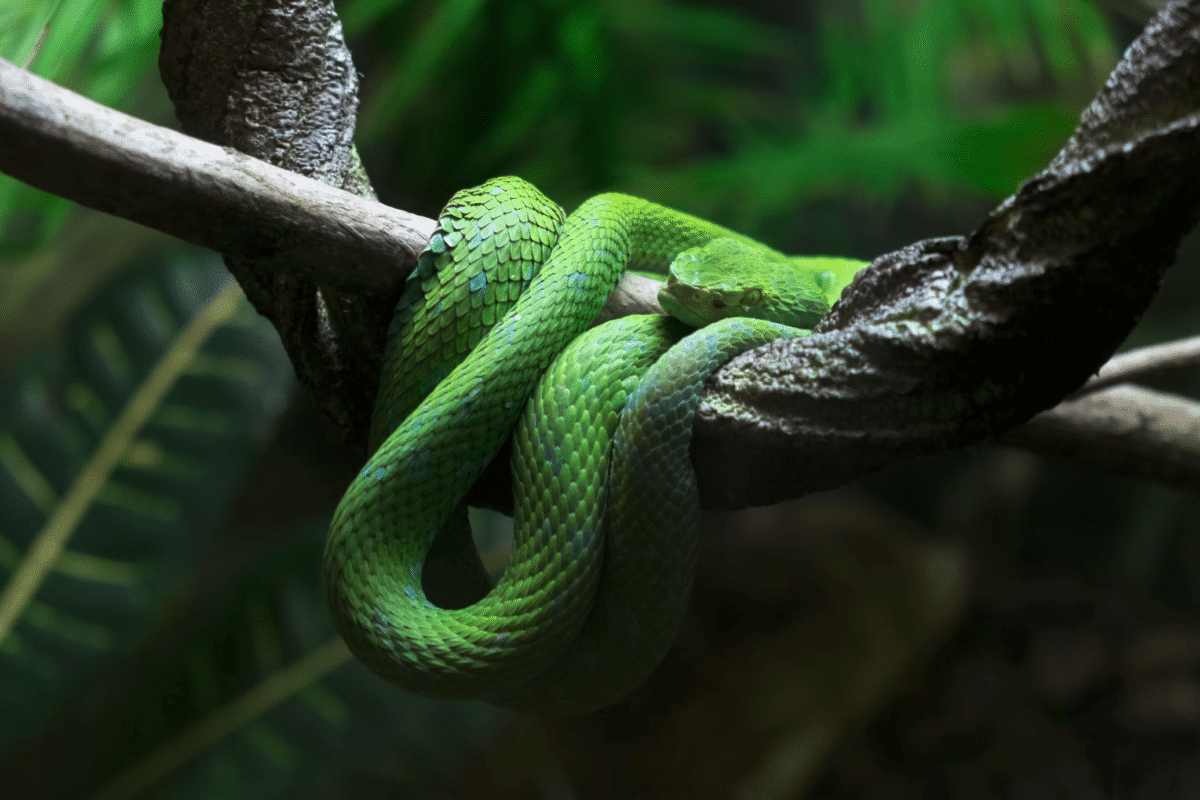
Want to jump ahead? Click below
Symptoms Of Green Tree Viper Bite
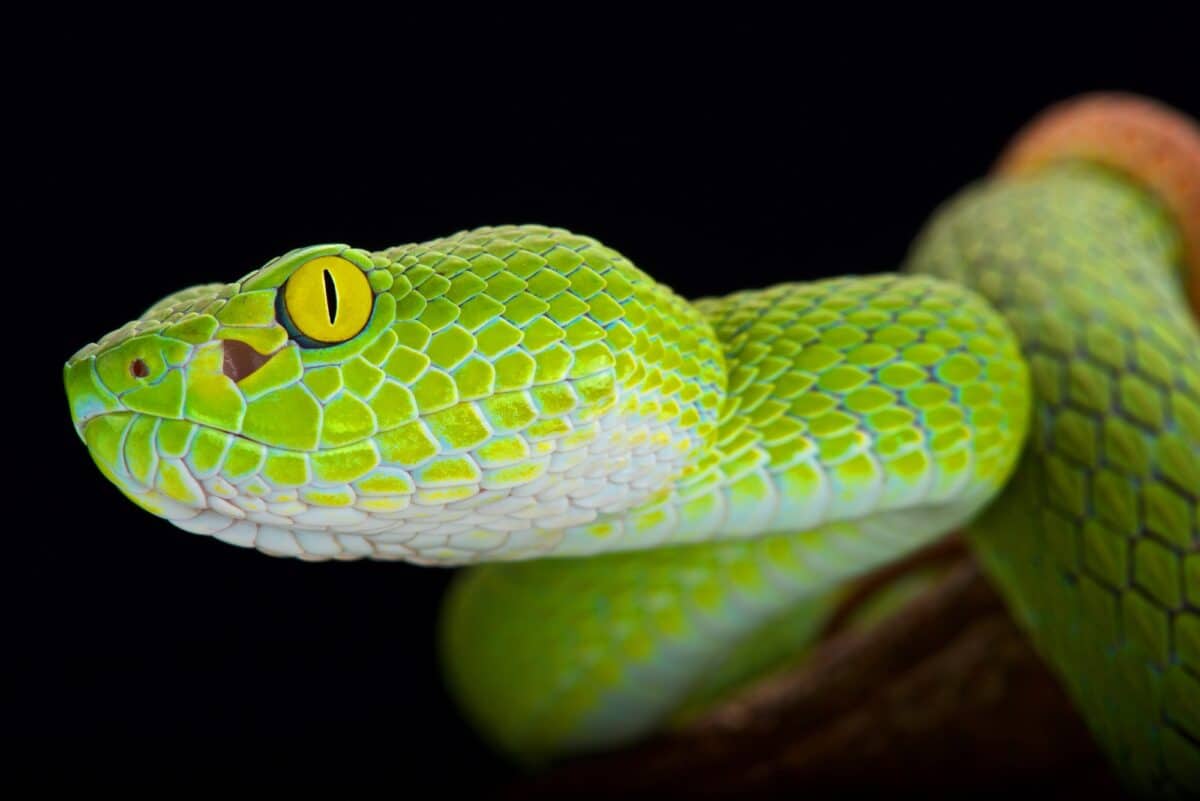
It is important to note that if a Green Tree Viper bites you, it is crucial to seek medical attention as soon as possible. The sooner you receive treatment, the better your chances are for a full recovery.
In addition, to prevent being bitten by this snake species, it is essential to take necessary precautions, such as wearing protective clothing and avoiding areas where this snake species are known to inhabit.
- Pain And Swelling
One of the most common symptoms of a Green Tree Viper bite is pain and swelling at the edge site. The venom of this snake species can cause the skin to become inflamed and tender, and the affected area may also turn red.
- Neurological Symptoms Such As Dizziness And Blurred Vision
Green Tree Viper bites can cause neurological symptoms, such as dizziness and blurred vision. This occurs because the venom of these snakes affects the nervous system and can cause disruptions in the signals between the brain and the rest of the body.
- Cardiovascular Symptoms Such As Rapid Heartbeat And Low Blood Pressure
Another potential symptom of Green Tree Viper bites is cardiovascular symptoms, such as rapid heartbeat and low blood pressure. The venom of these snakes can affect the heart and circulatory system, leading to rapid changes in blood pressure and heart rate.
- Systemic Symptoms Such As Fever And Nausea
In addition to the above symptoms, Green Tree Viper bites can cause systemic symptoms such as fever and nausea. The venom of these snakes can affect the entire body and lead to a range of systemic symptoms that may vary depending on the severity of the bite.
Treatment Options for the Bite
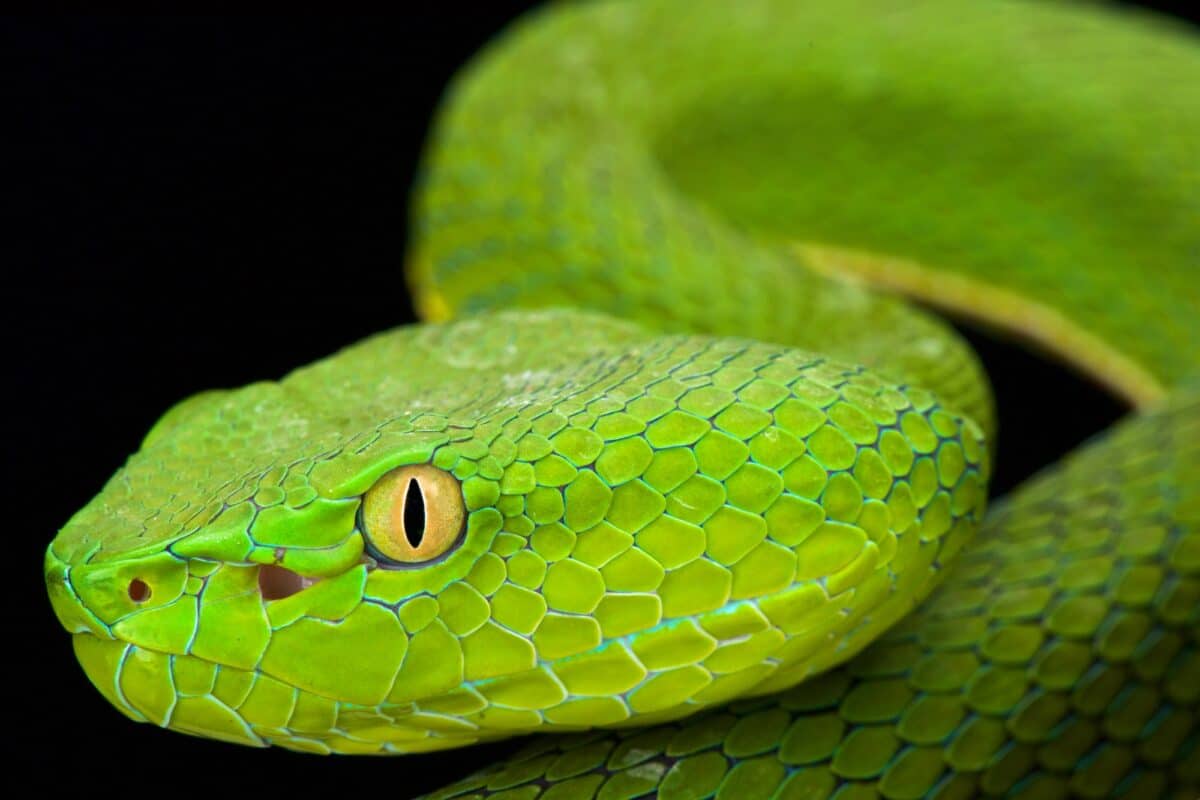
When bitten by a Green Tree Viper, seeking medical attention immediately is crucial. Delayed treatment can lead to severe health complications, including tissue damage, kidney failure, and even death. The following treatment options are available for individuals who are bitten by this venomous snake:
- Immobilization Of The Affected Limb
The first step in treating a Green Tree Viper bite is immobilizing the affected limb. This helps slow the spread of venom in the body and reduces the risk of severe health complications. Immobilization is typically carried out using a splint placed around the limb to prevent movement.
- Administration Of Antivenom
The administration of antivenom is considered the most effective treatment option for Green Tree Viper bites. Antivenom is a medication that contains antibodies that neutralize the snake’s venom. This medication is administered intravenously and should be given immediately after the bite.
- Pain Management
Green Tree Viper venom can cause significant pain at the bite site. Therefore, pain management is critical to treating this type of snake bite. Pain medications, such as morphine or fentanyl, may be used to provide relief to the patient.
- Cardiovascular And Respiratory Support
Green Tree Viper venom can severely affect the cardiovascular and respiratory systems. In some cases, respiratory distress, and cardiovascular collapse can occur and require immediate medical attention. Therefore, patients bitten by a Green Tree Viper must be closely monitored for any signs of these complications. Patients may require cardiovascular and respiratory support, including a ventilator, in severe cases.
Prevention Strategies for the Bite
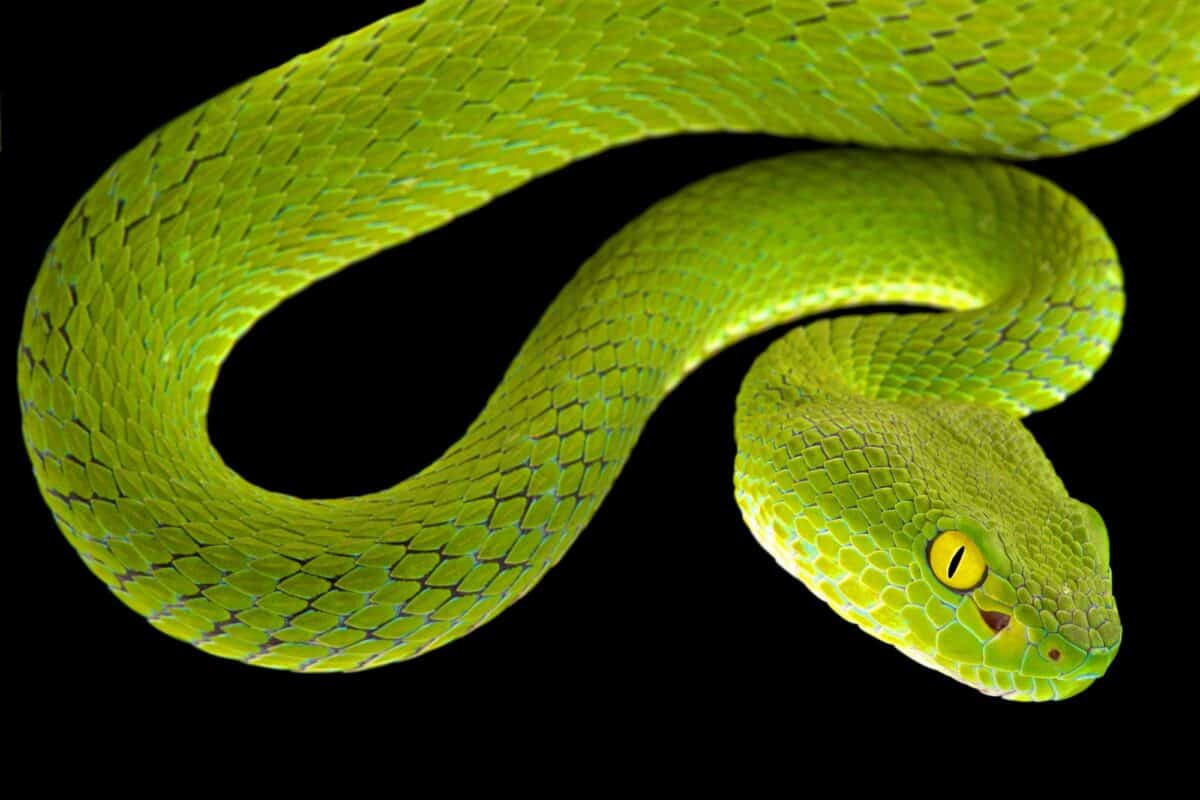
When protecting yourself from the venomous bite of a Green Tree Viper, it’s always better to be safe than sorry. Here are some essential prevention strategies to remember:
Avoidance Of Contact With Green Tree Vipers
Perhaps the most crucial aspect of preventing Green Tree Viper bites is avoiding any unnecessary contact with the snakes. Although the stunning green color of these vipers may be mesmerizing, it’s essential to remember that they are dangerous creatures that can strike at any time. Therefore, it’s crucial to stay clear of their habitat, particularly their favorite hunting grounds of trees and bushes.
Use Of Protective Clothing And Footwear
If you must venture into areas where Green Tree Vipers may be present, taking the necessary precautions is essential. This includes wearing heavy-duty gloves, long-sleeved shirts, and sturdy, thick footwear. Additionally, inspect your clothing and shoes before putting them on, as snakes can hide inside them.
Proper Handling And Relocation Of Green Tree Vipers
If you come across a Green Tree Viper in your area, you must contact local wildlife authorities or a professional snake handler to remove it safely. Never attempt to capture or relocate a snake yourself, as this can put you at risk of being bitten. It’s also vital to remember that Green Tree Vipers play a vital role in the ecosystem and should only be relocated to a safe area within their natural habitat.
Education And Awareness Of Local Snake Species And Their Dangers
Perhaps the most effective way to prevent Green Tree Viper bites is by educating yourself and your community about the dangers of venomous snakes and how to avoid them. Learn to identify the different types of snakes in your area and their unique behaviors, warning signals, and habitats. Also, educate your community, particularly children, on how to avoid contact with snakes and what to do in an emergency.
Learn more about Snakebite Prevention and First Aid.
Key Points
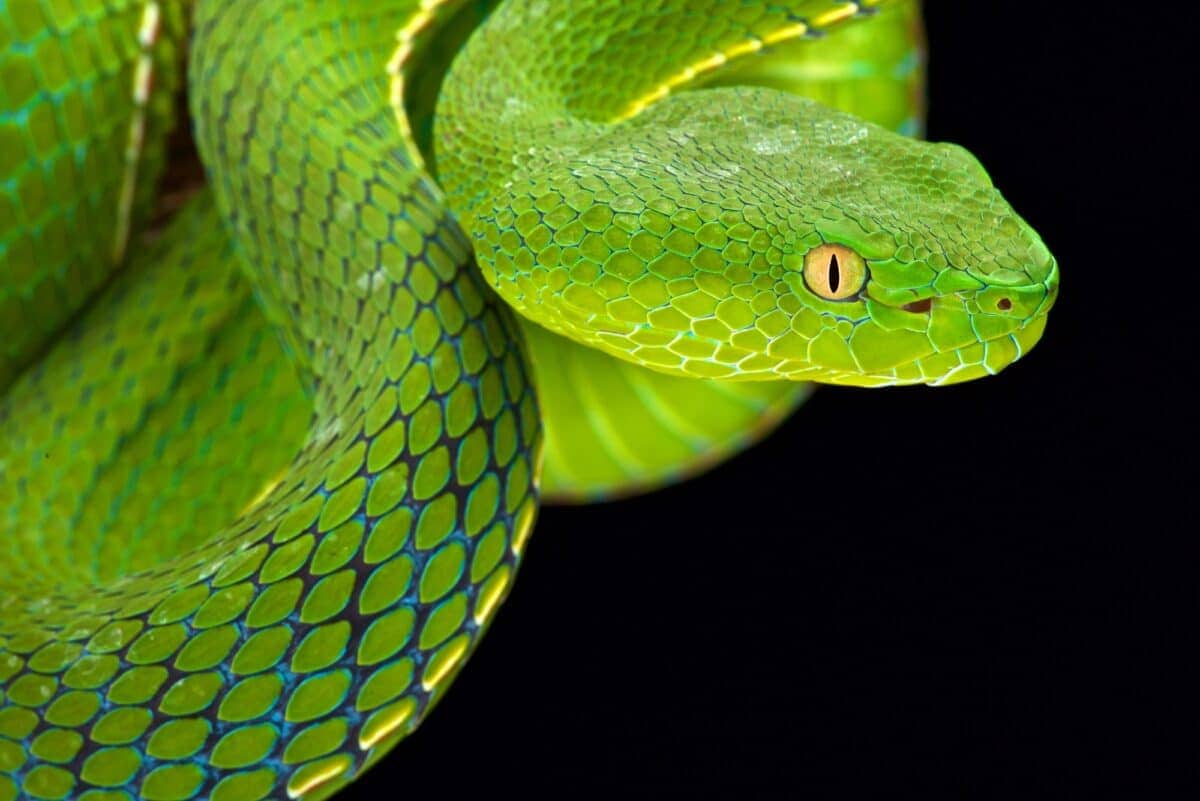
| The Green Tree Viper, is a venomous snake species commonly found in parts of Southeast Asia, South Asia, and East Asia. This snake species is known for its striking green color and can often be found in trees or bushes. |
| One of the most common symptoms of a Green Tree Viper bite is pain and swelling at the edge site. The venom of this snake species can cause the skin to become inflamed and tender, and the affected area may also turn red. |
| If you must venture into areas where Green Tree Vipers may be present, taking the necessary precautions are essential. This includes wearing heavy-duty gloves, long-sleeved shirts, and sturdy, thick footwear. |
| Therefore, patients bitten by a Green Tree Viper must be closely monitored for any signs of these complications. Patients may require cardiovascular and respiratory support, including a ventilator, in severe cases. |
| It is important to note that if a Green Tree Viper bites you, seeking medical attention as soon as possible is crucial. The sooner you receive treatment, the better your chances are for a full recovery. |
Wrapping Up with the Green Tree Viper Bite
Green Tree Viper bites can be a serious and life-threatening issue, especially if left untreated. If a Green Tree Viper has bitten you or someone you know, it is important to seek immediate medical attention. While the symptoms of a Green Tree Viper bite can be severe, effective treatment options can help manage the venom and prevent further complications.
Preventing Green Tree Viper bites is also crucial. It is important to be cautious while exploring areas where this snake species is known to reside. Wearing protective clothing, keeping a safe distance from snakes, and avoiding areas where snakes are frequently seen are all great prevention strategies.
By following the information and tips in this article, you can better protect yourself and your loved ones from the potential dangers of Green Tree Viper bites.
Thanks for following along with me! I hope you enjoyed reading about these two entertaining animals. Next are Witness the Heaviest African Buffalo Ever Found, Discover Timber Rattlesnake Bite and Most Expansive Coral Reef Ecosystem on Earth.
- Watch Hippo Mother Chases Crocodiles To Protect Her Dead Child - April 15, 2024
- Watch Elephants Ask Rescuer To Play Piano - April 12, 2024
- Top Techniques To Cleaning Up Dog Vomit - April 11, 2024

